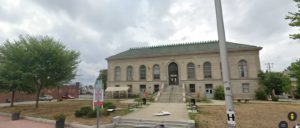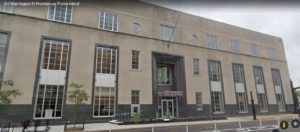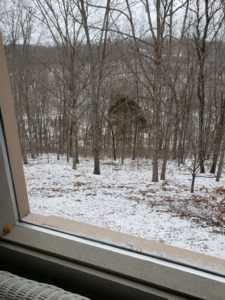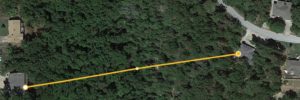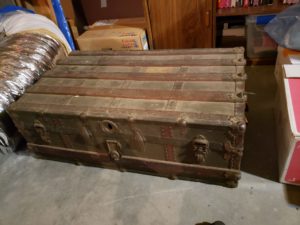
One of the consequences of being in West Texas on a long-ish (more than two weeks) grandparent duty is that I wasn’t home to handle one very important item, scheduled since January. This relates to decluttering and dis-accumulation in advance of a downsizing some day, specifically to the Stars and Stripes that I’ve written about before.

Not really about the newspapers, but the trunk they were stored in. This is an old steamer trunk that was one of three trunks that sat in the basement of my parents’ house for decades. As a kid growing up, I never knew the origin of those trunks nor what they were storing.
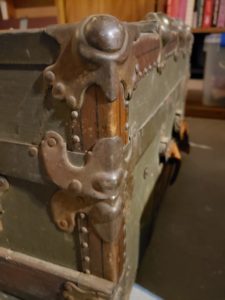
On one trip back to Rhode Island, in 1990, Dad and I talked about his war service setting type for the S&S. We went to the basement and Dad showed me all those newspapers he’d sent home from Europe, which his parents kept and put in the trunk.
When Dad died in 1997, I took the trunk back to Arkansas and there it sat, either in my garage or basement, until a few days ago. Last year I removed the contents and shipped them to the University of Rhode Island Library as a donation, keeping a handful of copies as keepsakes.
That left the empty trunk. It was a steamer trunk, nothing fancy. On one end “OT” was painted. I assume, therefore, that this belonged to my grandfather, my dad’s dad, Oscar Todd. He emigrated from Yorkshire, England, to the USA in 1910 at the age of 20. He was in New York City for a couple of years, then made his way to Rhode Island. There he worked, married, and raised a family.
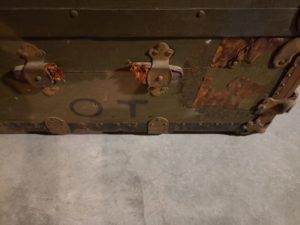
I assume that this trunk was the one he brought from England in 1910. I’m sure there’s a way to research it and determine its age and origin. But I’m convinced that’s what it is: my grandfather’s trunk. He kept it, and when those newspapers came in wartime mail, it became a good place to store them.
From 1910 to around 1950, the trunk was wherever Oscar was, in NYC, the Riverside district of East Providence, and Providence. From 1950 to 1997, it was in the basement of Dad’s house in Cranston. From 1997 to 2023, it was with me in two different houses. While not overly large, it just doesn’t fit in with the concept of dis-accumulation. So when I decided to donate the S&S, I decided to get rid of the trunk.
Neither of my children wanted it. I don’t fault them for that. The trunk would take a fair amount of restoration to be a display item. The heirloom value would only be to someone who knew Oscar, and he died before they were born. I thought of others in the family who might want it, and decided on a cousin’s son, Frank Reed. He and his wife have six children, Frank knew Oscar, his great-grandfather, briefly and remembers him, so that seemed the next logical place for it to go.
The problem is, Frank recently removed from New Jersey to Myrtle Beach, South Carolina. How to get the trunk to him? Shipping was a possibility, though expensive. So in January I put out a call on Facebook for anyone making a road trip there who would be willing to take the trunk. Amazingly, a woman responded saying she would be going to the North Carolina Outer Banks and could drive the trunk as far as Raliegh-Durham Airport. Could my cousin meet her there? He said yes, and arrangements were made for the trunk transfer at a certain time on May 9.
But then, grandparent duties took me away from home at the time we would have to get the trunk to the woman who was driving it east. She contacted me; I was in Texas, not planning to be home before May 7, when the trunk needed to go to her.
Our neighbors had a key to our house to water the plants. I contacted them and they were happy to help out. The first transfer, from our house to our neighbors, happened on the 6th. The second transfer, from our neighbor’s to Kimberly’s van, happened on the 7th. The third transfer, from Kimberly to Frank’s son’s car (he went to pick it up), happened in the cell phone lot at Raleigh-Durham Airport on the 9th, and the drive to Myrtle Beach the day.
So much work to get a simple trunk halfway across country. But it happened. Now Frank and his family can decide how best to display and enjoy this family heirloom, either as-is or with restoration.
Dis-accumulation continues. Next, Uncle Dave’s 1900 Encyclopedia Brittanica.



